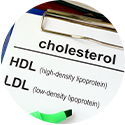Doctors in Greece are looking for solutions for young patients who feel that maintaining sport activities after total hip arthroplasty (replacement) constitutes an important part of their quality of life.
The majority of hip surgeons allow patients to return to low-impact activities, but significant caution is advised to taking part in high-impact activities. The answer they come up with was to experiment with “Short stems with hard on hard bearing surfaces might become an alternative to standard stems and hip resurfacing.”1 Simply, hip resurfacing is not a long-term answer and adjustment to hip replacement should be explored. This is probably not the medical direction an athlete coming in for degenerative ho pain wants to hear.
Surgery should always be the last option for a pain or sports injury as once surgery is performed you can never go back.
Despite doubts to its success, many athletes are turning to hip resurfacing or bone shaving as a means to treat Hip impingement syndrome or femoro-acetabular impingement (FAI) syndrome.
Hip pain occurs in athletes when the bone develops “spurs” or rough edges. These abnormalities begin to rub and fray against the ligaments, tendons and other soft tissues of the hips. Pain and weakness ensues. In the long run osteoarthritis.
Why are young athletes turning to this procedure? The belief that they can run again without complication and this will leave them the option for a total hip replacement in the future. However, research in the American Journal of Sports Medicine warns: ““Running is possible after hip resurfacing, and runners can even return to some level of competition, but this short follow-up series of hip resurfacing in athletes should be interpreted with caution regarding implant survival.” 2
Implant survival was the subject of a very troubling from Oxford University to be published in February 2017. Simple the Oxford paper says after 10 years of study they can conclude hip replacement has “poor implant survivorship and frequent complications”3
There are alternatives to hip surgery for the athlete. We have several treatment options, such as prolotherapy, platelet rich plasma (PRP) and stem cell therapy, designed to repair the joint, rather than simply suppressing the symptoms while the joint continues to degrade.
Do you have questions about this article?
Call US  856-424-8222 OR email us at: info@DrMagaziner.com
856-424-8222 OR email us at: info@DrMagaziner.com
1 Karampinas PK, Papadelis EG, Vlamis JA, Basiliadis H, Pneumaticos SG. Comparing return to sport activities after short metaphyseal femoral arthroplasty with resurfacing and big femoral head arthroplasties.Eur J Orthop Surg Traumatol. 2017 Jan 3. doi: 10.1007/s00590-016-1897-1.
2. Fouilleron N, Wavreille G, Endjah N, et al. Running Activity After Hip Resurfacing Arthroplasty: A Prospective Study. Am J Sports Med February 1, 2012 0363546511434564
3 Matharu GS, Pandit HG, Murray DW. Poor Survivorship and Frequent Complications at a Median of 10 Years After Metal-on-Metal Hip Resurfacing Revision. Clin Orthop Relat Res. 2017 Feb;475(2):304-314.




































Recent Comments